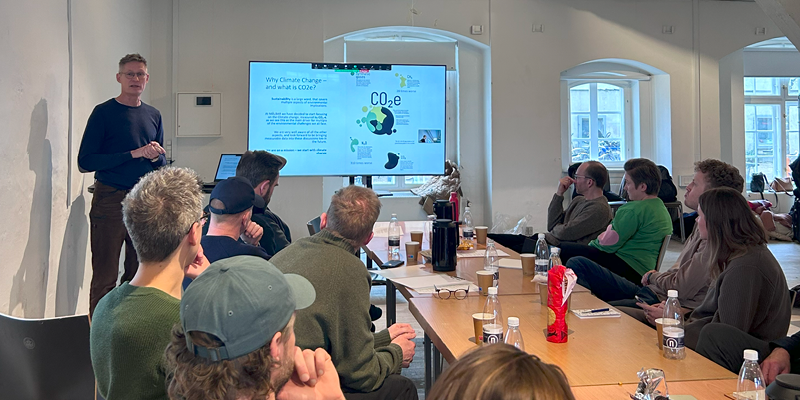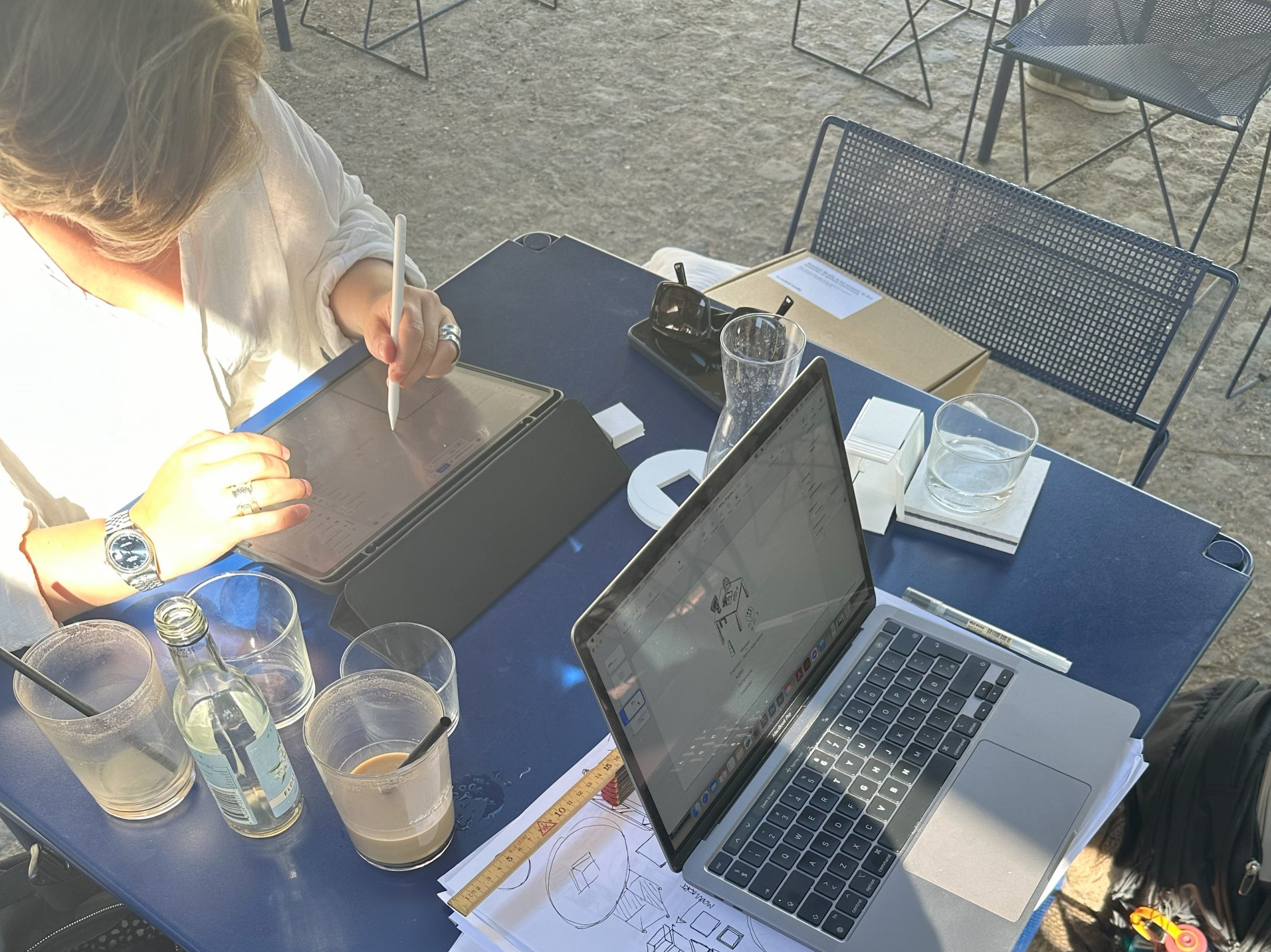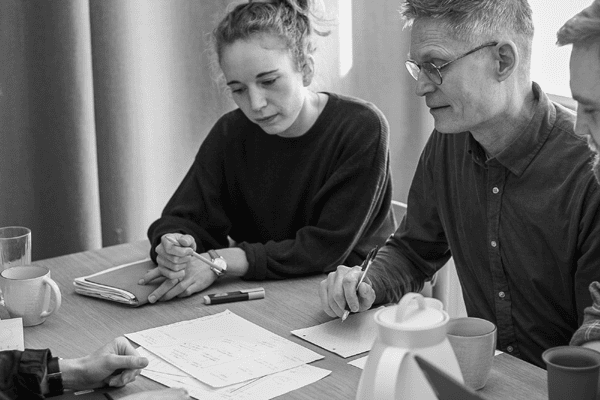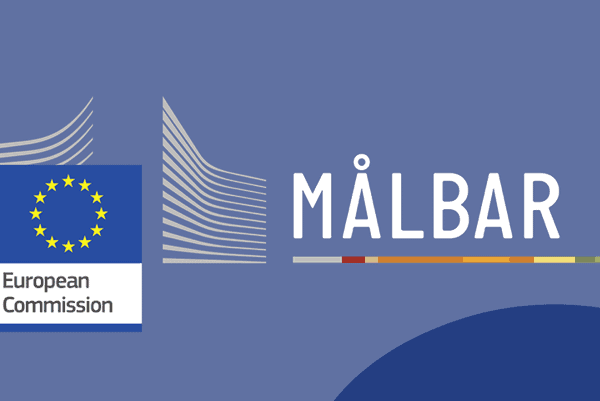
For the groundbreaking blind date project hosted by Danish Design Makers in cooperation with ORGATEC and Målbar, 19 design teams are working on fulfilling furniture briefs from anonymous furniture companies.
They all work under the overarching theme of Reduction, and this is how Målbar fits in. We have provided all the participating designers access to our climate screening tool and we have introduced them to it on a workshop. We have contributed to ensuring that the designers have had focus on reduction and sustainability from the very beginning of their design process.
How to use Målbar in designing
Many of the initiatives that are needed to reduce the climate impact from products must be implemented already in the design phase and product development phase.
It is generally said that up to 80% of product emissions are determined by the design choices. At the same time, design, trends, and commercials are the root of the desire for new products which leads to overconsumption. This is why knowledge about climate conscious material and production choices are so important for designers – and for the world.” says Co-founder and Head of Data and Analytics in Målbar, Anders Koefoed.
Hence, with the Målbar tool, the designers have the possibility of testing different scenarios and design choices to learn how their choices affect the climate impact of the product. They are also reminded to consider how the product will be transported and whether to enable it to be flat-packed. Furthermore, designing products for easy disassembly allows for repairing or replacing broken or worn-out components and for sorting materials correctly when disposing of the product. The designers are also encouraged to think about how they can reduce production waste by considering standard measures of materials in the industry.
The designers’ approach to the Målbar tool varies a lot. Some have used it from the beginning, some have used it to make their final design choices, and some have used it mostly to calculate the footprint of their final design. But they have all had it in mind during their entire process. The insights and knowledge they received at our workshop have functioned as a guiding principle throughout their process.
The cooperation with Målbar influences how we work – put things a bit on the edge. I think we take the reduction theme a little more serious, which is a good thing. Reduction ought to be a part of all new designs” says designer and DDM board member, Nikolaj Steenfatt

How can we integrate a data-based tool in a creative design process?
Some of the designers have found it tricky to get started with the tool. And of course, it is difficult to brake a habit or a routine, implementing a completely new tool in your work process. However, it is very valuable for Målbar to find out what it takes to make our tool attractive for designers to use.
For designer Thomas Sigsgaard, part of the renowned design duo Salto&Sigsgaard, it doesn’t make sense to use the tool from the very beginning of his design process. In general, he always starts by asking himself what problem needs to be solved and how he can make an authentic product that the world needs.
I have some criteria for my designs. They come first. But it is still quite interesting to bring in the Målbar tool somewhere in the design process. Especially if you stand between two similar materials, it is useful to be able to look up which of them causes the highest emissions” , he says.
We asked the designers what it would take to make such a data driven tool interesting for them to use in their work. Spatial designer, Karen Toft who has designed the exhibition stand for the ORGATEC fair suggests that a screening tool for designers should be simpler and more like an encyclopedia.
I think the Målbar tool is very useful to make some crucial decisions, and to learn about the emissions of different materials. Also, it is interesting to see the actual difference it makes to choose one material over another.”
Karen underlines that some of the functions are unnecessary for many designers. This could for example be the location functions in the tool, since the designers do not have much influence on where in the world their designs will be produced. Still, the locations functions allow for the designer to create specific scenarios pointing the brand in a greener direction based on real data. Also, the transport and logistics might be irrelevant for a designer to make decisions about. But the possibility to test emissions from materials and production processes is very valuable.
I think Målbar is a really good tool. As a designer, you might have all kinds of ideas and assumptions about the climate impact of different materials and processes, but often you do not have anything to pin it on. We get that in Målbar’s tool. Prove or disprove of our conjectures” says designer and DDM board member, Thomas E. Alken.
Concerns about exhibiting climate numbers
Some of the designers have worried about the risk of being compared to each other or judged solely on their climate number by displaying these at the fair. This is a legitimate concern, but also one that Målbar is experienced in handling. We know what lies behind each number and we will write a clear explanation to each climate result to increase the understanding of the many aspects behind it. We will also be present at the ORGATEC fair to answer any questions regarding the climate calculations of the designs.
This dilemma is something that Målbar always is aware about, because we know it can be demotivating to be judged on the emissions on ones products when one bothered to go the extra mile and actually measured the footprint. And we do not want this to be a barrier. Therefore, we use our SoMe channels and our blog to educate and enlighten our followers about important legislation updates, new interesting topics, and inspirational casestories.
It is important to underline that it doesn’t make sense to compare a wooden stool with a lamp. Or a sofa with a bookcase. What is interesting really, is the choices that the designers have made that have reduced the impact of a similar conservative design. Therefore, the calculated climate footprint of each design will be commented and compared with other obvious design choices to provide perspective to each case.
Valuable collaboration
Målbar appreciates this opportunity to share our knowledge and insights about the emissions of materials, processes, transport, and design choices with such a big, heterogenous group of designers. Even though not all of them have used our tool in the beginning of their design phase, they all put a lot of effort into minimizing the impact of their designs. And many of them are even more aware of how they can influence the impact from their designs now. This is a big step. Knowing that their work will be presented at ORGATEC is also exciting to us and we look forward to participating.


